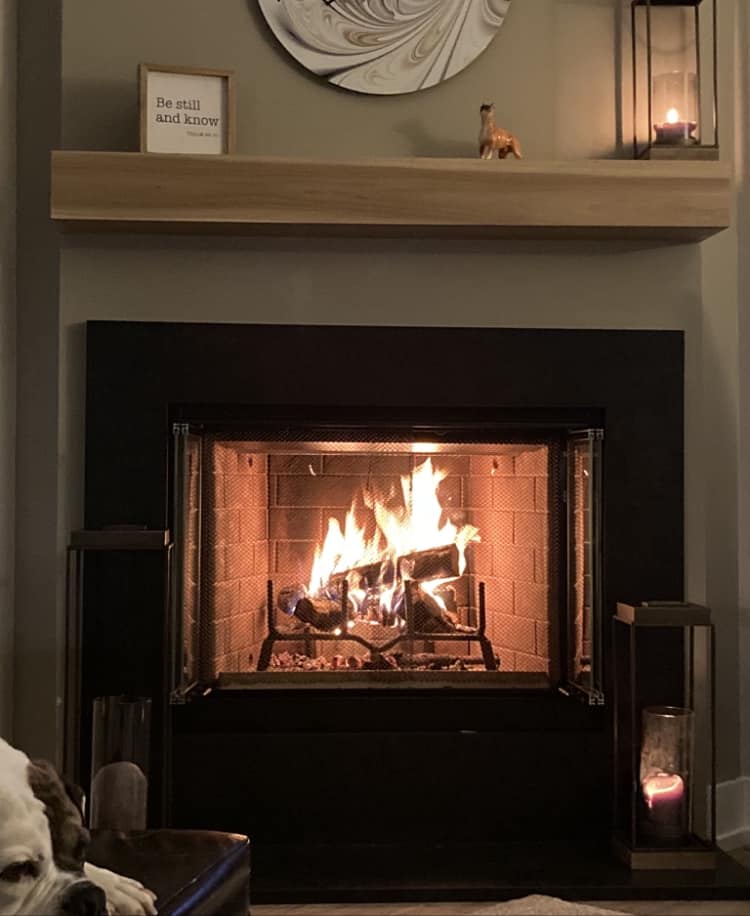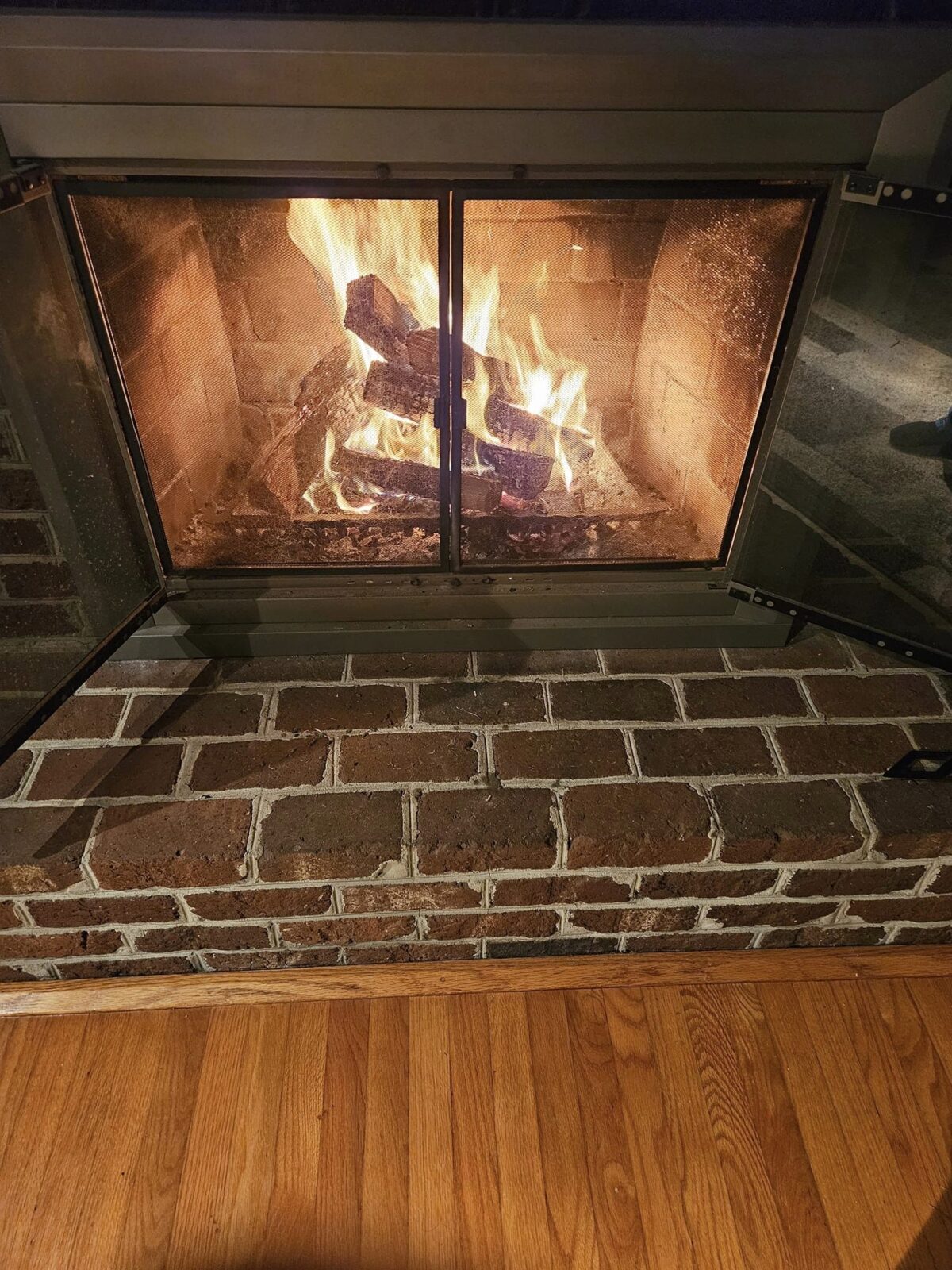Even with modern gas and electric fireplaces available today, wood-burning fireplaces remain popular, and it’s not hard to see why. There’s lots to love about wood-burning fireplaces, especially if yours is in excellent condition.
However, not so fast; before installing a wood-burning fireplace, decide whether you can live with its limitations.
This article explores the pros and cons of wood-burning fireplaces to help you make a smart decision.
Wood Burning Fireplace Pros
Below are the benefits of wood-burning fireplaces and why they have remained popular all these years.
1. Unmatched Ambience
The warm, inviting, and cozy atmosphere of a wood-burning fireplace is unmatched. While electric and gas fireplaces look good, nothing compares to the ambience firewood offers. It evokes the nostalgia of sitting by the fireplace with loved ones during winter holidays and family gatherings.
A lot of people also find the flickering flames and crackling burning wood soothing. Moreover, a wood-burning fireplace’s soft, natural light is gentler than artificial lighting and sets a calm, peaceful, and even romantic mood.
That’s not all; as wood burns, it releases a pleasant, distinct aroma often described as earthy. Your fireplace will produce different scents depending on the firewood you use. For example, hickory is heartier and richer, while cherry is fruity and sweet.
2. Eye-Catching Focal Point
A wood-burning fireplace in your living room will naturally become the heart of the room, effortlessly drawing you in and providing a nice gathering spot. Wood-burning fireplaces are versatile in design and style, hence ideal for any aesthetic.
You can put a wood-burning fireplace in a modern, traditional, minimalist, or rustic home. Also, these fireplaces let you incorporate elements of the natural world into your house, creating a truly unique focal point.
Furthermore, a wood-burning fireplace makes a stunning canvas for décor.
Read More: Best And Worst Types Of Wood For Your Fireplace
3. It Can Be An Affordable Heating Source
A wood-burning fireplace can offer a considerably cheaper way to warm your house than gas and electricity, especially if you live in an area where firewood is abundant and affordable. It is even much cheaper if you have your own firewood supply, such as a tree plantation.
Using wood to heat your home can lower your utility bills. For instance, if you can warm your house in winter using a wood-burning fireplace instead of running the central heating, it will save you money.
4. Unaffected By Power Outages
You can start a wood-burning fireplace even during a power outage or a gas supply interruption, provided you have firewood. This is because this fireplace does not require electricity to function. This ensures your home is heated whenever you want— this is highly beneficial if you lose power often and live in a cold climate.
The flames can also help illuminate the room when lights go out, helping you move around in the dark without bumping into things.
5. Renewable Heat Source
As more of us take strides to be eco-friendly, choosing environmentally friendly ways to warm our homes helps. You will be happy to know that wood-burning fireplaces are eco-friendly because wood is renewable.
However, this only works if the wood is harvested responsibly. While fossil fuels take millions of years to develop, forests regenerate relatively faster if managed sustainably. Also, if you source your firewood locally, the fuel used to transport it is significantly lowered, thus reducing the carbon footprint.
Modern wood-burning fireplaces give out fewer emissions and burn more efficiently. This makes them more eco-friendly.
Related Posts:
- Simple Christmas Mantel Decorations
- Electric Fireplace Pros and Cons
- How to Get Rid of Fireplace Smell
- Indoor Gas Fireplace Pros And Cons
6. Increases The Home Value
You might get better offers when selling your home if it has a wood-burning fireplace. It can be the selling point in some regions or to certain buyers, such as those who appreciate traditional aesthetics.
7. Provides Residual Heat
A wood-burning fireplace can continue warming your home long after the flames die. But how? The embers keep smoldering after the fire goes out, emitting warmth for hours. In addition, fireplace materials, such as brick, stone, or metal, absorb heat during the burn and release it slowly.
The gradual release of warmth can keep your home at conducive temperatures without additional heating. This can help lower your utility bills.
Wood-Burning Fireplace Cons
Wood-burning fireplaces have some drawbacks that you should consider. These are:
a) High Maintenance
Keeping a wood-burning fireplace in good working condition takes effort, time, and money. For instance, you’ll need to remove ash after every couple of fires to prevent build-up. Moreover, you must clean the hearth, mantel, and surrounding walls regularly to get rid of any smoke and soot stains.
Chimney cleaning is a major responsibility but a necessary part of the maintenance work for a wood-burning fireplace. Consider an annual chimney sweep.
Aside from keeping your wood-burning fireplace clean, periodic inspections are needed to find and fix any issues.
b) High Installation and Upkeep Costs
Installing a wood-burning fireplace can be very costly, especially if you don’t have an existing chimney. Skilled labor is needed to install a chimney and the fireplace. Aside from labor, the materials, the size of the fireplace, and any customizations you incorporate will add up to the installation expenses.
Repairs, inspections, and professional chimney cleaning also cost money, with severe damages costing more.
c) Heat Loss
This is a major drawback of wood-burning fireplaces. Wood-burning fireplaces lose a lot of heat through the chimney, making them less efficient than electric and gas fireplaces.
d) Safety Concerns
The risk of fire is a genuine concern when using a wood-burning fireplace. Hot embers and sparks from the fireplace can cause fires by igniting the flammable items nearby. Creosote is also highly flammable. Moreover, open fires and hot surfaces are unsafe around kids and pets.
Carbon monoxide can leak into the house if your wood-burning fireplace isn’t well-ventilated or the flue or chimney is blocked. This gas is deadly in high concentrations.
e) Labor Intensive
Transporting, splitting, and stacking wood can be cumbersome, especially if wet or heavy. You will also need to create space to store the firewood, whether indoors or outdoors.
Starting a wood-burning fireplace also takes effort and time. For instance, you will need firewood, kindling, and fire starters.
Unfortunately, your work doesn’t end once you successfully start the fire. On the contrary, a wood-burning fireplace needs tending— adjust the log, keep an eye on the flame, and add more wood.
Wood-burning fireplaces are less convenient and more time-consuming compared to electric and gas fireplaces.
f) Limited Use During Warmer Seasons
Since you cannot lower or raise the heat of a wood-burning fireplace at your pleasure, using them during warm seasons is impractical as it can make the house uncomfortably warm. This limits their use to cold seasons.
h) Compromise The Air Quality
Emissions from a wood-burning fireplace can pollute the air inside and outside. For instance, wood burning releases harmful substances such as volatile organic compounds (VOCs) like benzene and formaldehyde, carbon monoxide, and nitrogen oxide into the air.
These emissions not only compromise the air quality but also put your health at risk, especially if you have respiratory issues.
i) Environmental Concerns
Although wood is renewable, cutting down trees contributes to habitat disruption and deforestation, especially when done irresponsibly. Also, the smoke from wood-burning fireplaces emits carbon dioxide, fueling global warming.
Summary
To some, the benefits of a wood-burning fireplace outweigh the drawbacks, and vice versa. If you don’t mind the work that goes into maintaining and cleaning a wood-burning fireplace and love the ambience and the authentic, classic look, go for a wood-burning fireplace. On the other hand, choose alternative options like gas and electric fireplaces if you prioritize safety and efficiency.

Hi! I’m Susie, the creative mind behind Cozy Castle 101. I love sharing easy and simple ideas to make home and garden spaces cozy and inviting. From simple DIY projects and fun crafts to family-friendly recipes, I’m all about creating a warm, welcoming home where memories are made. Join me as I explore ways to add a bit of creativity and charm to everyday life!


